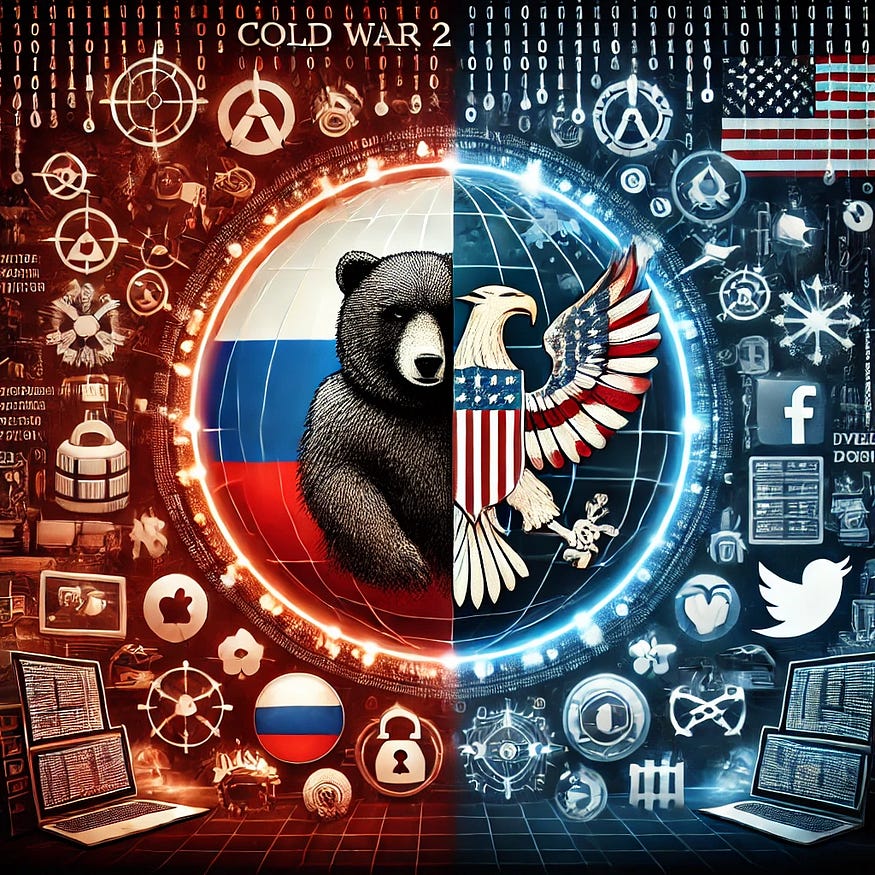Agents of Influence
From Bankruptcy to Russian Stooge
The Historical Events Leading to the Cold War 2
The 1980s: Trump’s Financial Desperation
In the 1980s, Donald Trump was a burgeoning real estate mogul with high-profile projects and even higher ambitions. However, his aggressive business strategies led to financial trouble. By the late ’80s, Trump was teetering on the edge of bankruptcy. His Atlantic City casinos, extravagant purchases like the Trump Shuttle airline, and the Plaza Hotel in New York City were all financial disasters. As American banks began to see him as a high-risk borrower, they became reluctant to fund his ventures. Trump’s financial instability and subsequent legal battles made it nearly impossible for him to secure loans from U.S. banks.
The 1990s: Russian Lifelines
Enter Russian financiers. With American banks closing their doors, Trump began to seek alternative sources of funding. Russian oligarchs and banks, many of which were state-controlled, saw an opportunity. Through a series of complex financial transactions, including investments in Trump properties and money laundering schemes, Russian money began to flow into Trump’s businesses. These relationships provided Trump with the capital he needed to stay afloat, but they also marked the beginning of a much deeper entanglement with Russian interests.
The 2000s: Deepening Ties
Throughout the 2000s, Trump’s financial connections with Russia deepened. Russian buyers purchased numerous Trump properties, often through shell companies, adding to suspicions of money laundering. These transactions were beneficial for both parties: Trump received much-needed cash, while Russian oligarchs and criminals found a way to launder their illicit gains through U.S. real estate. This mutually beneficial relationship was built on financial necessity and opportunism, but it laid the groundwork for future political manipulation.
2016: The U.S. Elections
The U.S. presidential election of 2016 was a pivotal moment. With Trump now a candidate, Russia saw an opportunity to influence American politics directly. The Russian government, through its intelligence agencies and cyber operations, launched an extensive campaign to interfere in the election. This included hacking Democratic Party emails, spreading disinformation through social media, and attempting to sow discord among American voters. Trump’s campaign was accused of colluding with Russian operatives, a claim that would lead to a prolonged investigation and further strain U.S.-Russia relations.
The Georgia Elections
The interference didn’t stop with the presidential election. In 2020, as control of the U.S. Senate hinged on runoff elections in Georgia, there were again allegations of foreign interference. Russian operatives were believed to be involved in spreading misinformation and attempting to manipulate voter turnout and public opinion. These efforts were part of a broader strategy to weaken American democratic institutions and sow chaos within the political system.
Ukraine: A Precursor to Broader Conflict
Meanwhile, Russia’s ambitions were not limited to influencing U.S. politics. In 2014, Russia annexed Crimea from Ukraine, leading to widespread condemnation and sanctions from the international community. Ukraine became a focal point of Russian geopolitical strategy, with ongoing conflicts and allegations of Russian interference in Ukrainian elections. These actions were part of a broader pattern of Russian aggression and influence operations, highlighting the country’s willingness to use hybrid warfare tactics to achieve its goals.
The New Cold War
All these events culminate in what many are now calling the second Cold War. Unlike the first, this conflict is not defined by ideological battles between communism and capitalism but by geopolitical maneuvering and information warfare. Russia, under Vladimir Putin, seeks to reassert its influence on the global stage and undermine Western democracies. Trump’s presidency, marked by accusations of collusion and a cozy relationship with Putin, is seen by many as a critical element of this new Cold War.
Trump’s financial entanglements with Russia and his actions as president have led to widespread accusations that he is a Russian stooge, selling out American interests for personal gain. This complex web of financial, political, and strategic interactions has brought us to the current state of affairs, where information warfare, election interference, and geopolitical maneuvering are the new battlegrounds.
Conclusion
The journey from Trump’s financial desperation in the 1980s to his role in the geopolitical struggles of today is a testament to the intricate and often opaque connections between money, power, and politics. Understanding these connections is crucial to comprehending the ongoing conflict between Russia and the West, and the stakes for global democracy. As we navigate this new Cold War, the lessons of the past decades will be essential in shaping our response and defending the values of freedom and democracy.


